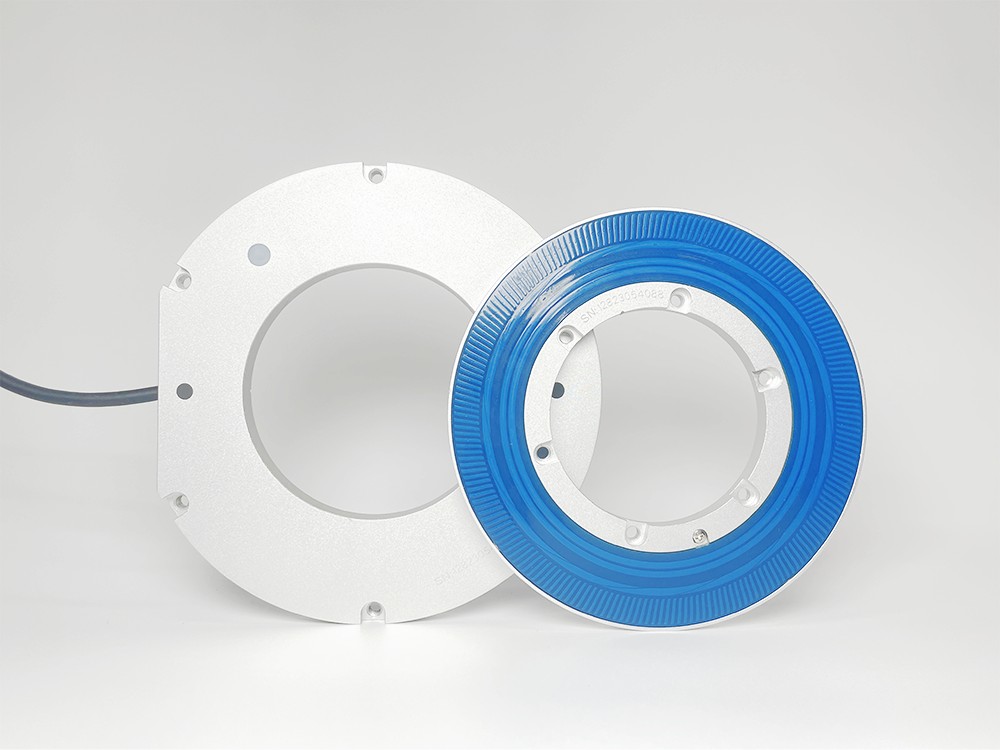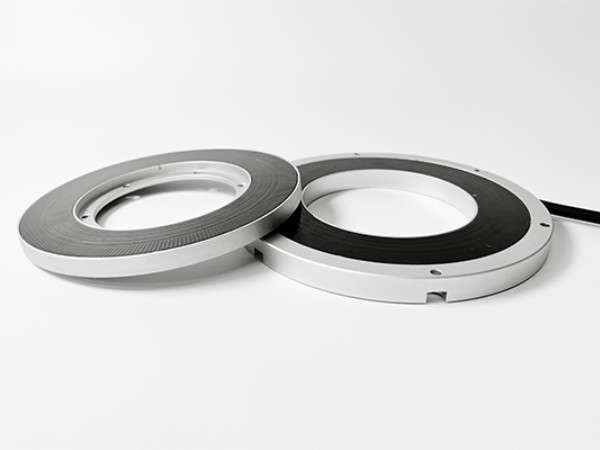Industrial automation is at the heart of modern manufacturing, logistics, and countless other industries. Among the essential components that enable seamless automation are industrial encoders-sophisticated sensors that transform motion into data, allowing machinery to function with precision. The encoder industry has also been undergoing exciting transformations, as encoder technology innovation are bringing greater accuracy, durability, and intelligence to automated systems.
In this article, we'll delve into the types and functions of industrial encoders, examine recent break throughs in encoder technology, and explore the impact these developments have across various industries.
Understanding Industrial Automation Encoders
An industrial automation encoder is a device that senses motion and position data, converting it into digital signals. These signals are crucial for monitoring and controlling machinery in real time, allowing industries to achieve greater precision, speed, and safety. In sectors where automated equipment needs to function with minimal error-such as robotics, aerospace, and automotive manufacturing-encoders play a central role in ensuring smooth, synchronized operation.

Types of Encoders in Industrial Automation
Industrial encoders come in various forms, tailored for different applications and environments:
- Rotary Encoders: Capture the angular position of a rotating shaft. Commonly used in robotic arms, conveyor systems, and motors.
- Linear Encoders: Translate linear motion along a path into position data. Ideal for applications like CNC machines, elevators, and robotic movement.
- Absolute Encoders: Provide unique position values for each location, retaining data after a power loss ideal for machines that require precise positioning.
- Incremental Encoders: Measure relative movement to provide speed and direction data, useful for tracking acceleration and monitoring operational speeds.
- Optical Encoders: Known for high accuracy, these use light-sensitive components to capture motion, but are often more sensitive to dust and vibration.
- Magnetic Encoders: Built to withstand harsh conditions, magnetic encoders are durable and suitable for environments where dust, moisture, or temperature fluctuations are common.

Key Functions of Industrial Automation Encoders
Encoders serve essential roles in automation, ensuring machines maintain precise control over their movements and operations. Key functions include:
- Position Sensing: Tracking position data with high accuracy.
- Speed Measurement: Monitoring speed in applications like conveyor belts and robotics.
- Direction Tracking: Indicating the direction of movement, which is critical for assembly lines and sorting systems.
How Encoders Power Industrial Automation
Encoders enable precision control across industrial applications. By providing accurate, real-time feedback, encoders allow machinery to make micro-adjustments to stay within design tolerances. They also play a critical role in workflow automation, ensuring processes are synchronized and reducing manual labor.
Additionally, encoders contribute to quality assurance by maintaining consistency and reducing error rates in mass production. For instance, in high-speed assembly lines, encoders ensure that each part is aligned correctly, minimizing material waste and rework.
Recent Innovations in Encoder Technology
Recent encoder innovations focus on improving size, durability, and data capabilities. For example:
- Miniaturization: Newer encoders are increasingly compact, making them suitable for smaller devices without compromising performance.
- Enhanced Durability: High-performance materials make encoders more resistant to shock, vibration, and extreme temperatures, expanding their applicability to rugged environments.
- Data Security: With sensitive industries like aerospace and defense adopting encoders, cybersecurity features have become essential to protect data integrity.
Real-Time Data Encoders in Industrial Systems
Real-time data encoders provide instantaneous feedback, allowing machines to self-correct during operation. This capability is crucial in systems like automated assembly lines, where even slight delays can lead to production inefficiencies or inaccuracies.
IoT and Encoders in Smart Factories
The Internet of Things (IoT) has revolutionized industrial encoders, enabling them to connect with a factory's digital network. IoT-enabled encoders can continuously transmit data, allowing operators to monitor conditions remotely and perform data-driven adjustments. This real-time connectivity enhances preventive maintenance, productivity, and operational insight.
The Role of Edge Computing in Encoder Technology
Edge computing allows encoders to process data locally, reducing latency and improving system responsiveness. In fast-paced manufacturing environments, this capability is especially beneficial, as it minimizes the time required for machines to respond to input data.
Wireless Encoder Solutions for Flexibility
The development of wireless encoders has increased operational flexibility, particularly in mobile or robotic applications where cables can restrict movement. Wireless encoders transmit data through radio signals, allowing for flexible setup and reducing installation and maintenance costs.
Encoders in Harsh Environments
Industrial encoders designed for extreme environments can resist exposure to dust, moisture, high temperatures, and chemicals. This durability allows them to function reliably in applications such as mining, oil and gas, and outdoor construction equipment.
How Encoders Drive Predictive Maintenance
Encoders play a key role in predictive maintenance by monitoring real-time performance data and detecting irregularities. This data can reveal early signs of wear or malfunction, allowing maintenance teams to schedule repairs before a breakdown occurs, reducing unplanned downtime and extending machinery lifespan.
Key Industries Benefiting from Encoder Innovations
The versatility and precision of modern encoders make them ideal for many sectors:
- Automotive: For precise motion control in manufacturing and assembly lines.
- Aerospace: In applications that require high reliability and accuracy, such as satellite positioning systems.
- Pharmaceuticals: Ensuring precision and compliance in the production of medication and laboratory devices.
- Packaging: Improving accuracy and efficiency in labeling, sorting, and packing systems.
Emerging Trends in Encoder Technology
Today's advancements in encoder technology focus on AI integration for enhanced analytics, energy efficiency, and greater data processing capabilities. These features allow encoders to provide in-depth insights into machine performance, contributing to optimized workflows and smarter decision-making.
Selecting the Right Encoder for Your Application
When choosing an encoder, consider the environment, desired accuracy, and required durability. Each type has unique advantages, and some applications may even benefit from custom-built solutions tailored to specific operational needs.
Future of Encoder Technology in Industrial Automation
As AI and machine learning become more integrated with encoder technology, we can expect even greater advancements in predictive maintenance, fault detection, and autonomous decision-making. Additionally, innovations in robotics and automation will continue to rely on encoders that offer higher precision, speed, and reliability.
FAQs on Industrial Automation Encoders and Technology Innovation
Q1: How do industrial encoders improve automation?
A1: Encoders provide precise motion data, enabling machines to operate accurately and with minimal error, essential for efficient automation.
Q2: What distinguishes absolute encoders from incremental encoders?
A2: Absolute encoders retain specific position data even after power loss, whereas incremental encoders provide relative movement data based on previous positions.
Q3: Can encoders work effectively in rugged environments?
A3: Yes, many industrial encoders are built to resist dust, water, and temperature extremes, making them suitable for demanding industrial applications.
Q4: How do wireless encoders compare to wired encoders?
A4: Wireless encoders offer installation flexibility and reduce maintenance needs, but they may require considerations around interference and power requirements.
Q5: What role does IoT play in encoder functionality?
A5: IoT-enabled encoders can send real-time performance data to centralized systems, facilitating predictive maintenance and enhancing overall operational efficiency.
Q6: Which industries benefit most from encoder technology?
A6: Automotive, aerospace, pharmaceuticals, and packaging
INQUIRY NOW
